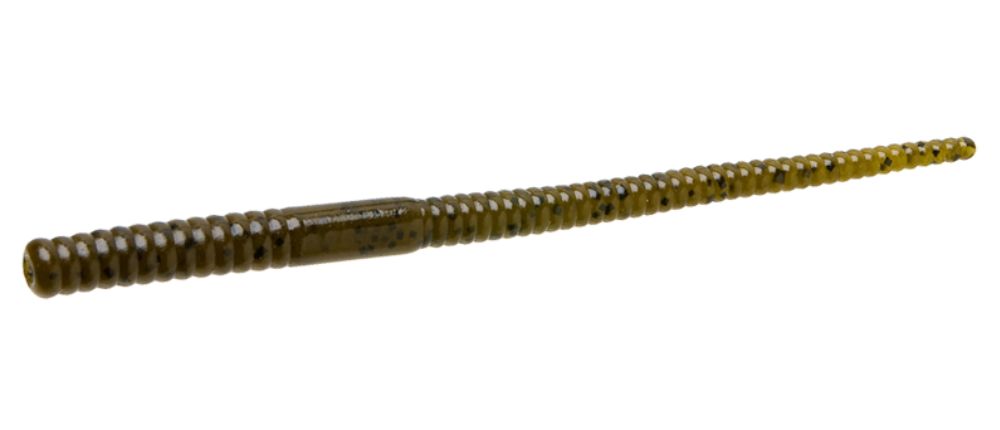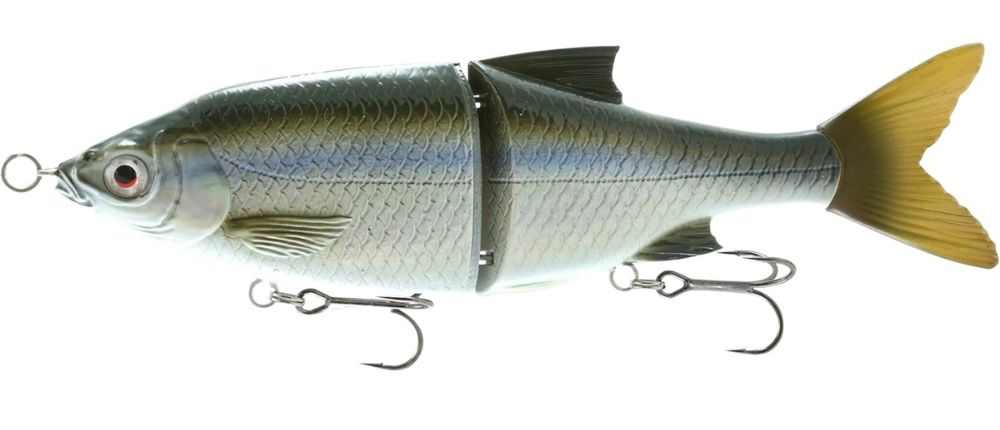Bass anglers wait all year for fall. As the water temperature drops and the days get shorter, bass put on the feedbag before the lean winter months. Also, the fish are transitioning from summer hideouts to winter holes, so anglers must stay on the move. To get the attention of aggressive bass, anglers throw loud, active lures. Or, a finesse approach drives hungry bass into a mindless hunter.
The key to fall bass fishing is covering water to locate fish, then zeroing in on the target to score over and over again.
Best bass lures for fall: top picks
Best Search Bait
Crock-O-Gator Bait Company Head Knocker
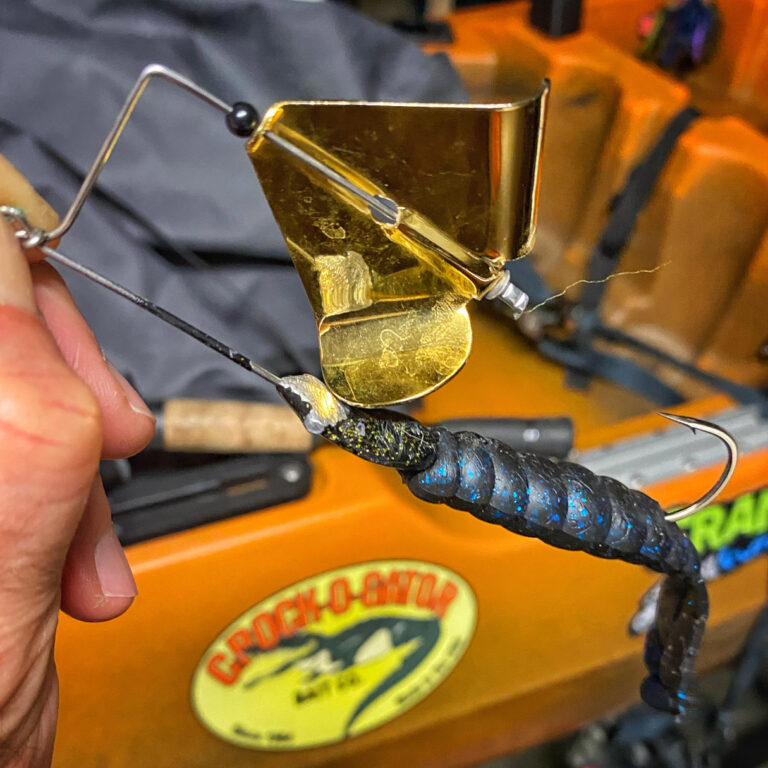
Buy from:
Why it works
A buzzbait is a player from spring bass spawn until the water cools below the mid-50’s, but the bladed bait really shines in fall. The fish often scatter on large, shallow flats. By working a buzzbait with a fast retrieve, I cover more water to encounter a feeding bass. A buzzbait creates surface commotion that mimics baitfish activity.
When searching for bass in the fall, I look for the dominant shallow-water cover on the lake. Some lakes have flats with stumps and laydowns, other lakes have vegetation, docks or rocks.
The perfect weather for throwing a buzzbait is light to moderate wind producing a slight chop on the water surface. Clouds and overcast skies help disguise a buzzbait, especially on a clear-water lake. On a lake with stained or muddy water, I use a buzzbait even when the weather is calm.
I cast my buzzbait beyond the structure I’m targeting. Then, I quickly engage the reel and begin reeling before the lure can sink. Experiment with retrieve rates, but I do best working the lure fast enough to keep it swimming just below the surface. The moderate retrieve gives the fish time to strike the lure as it passes overhead.
For many years, anglers used buzzbaits with a simple skirt. In recent years, removing the skirt and replacing it with a soft plastic toad or swimbait has become popular. The soft plastic changes profile and action. The soft plastic also increases the profile giving the bass a larger target to slurp down and improving my chances at a hook set.
Braided line floats to improve the buzzbait’s action. Braid also allows me to make long casts. Braided line doesn’t stretch, so I get more power in my hookset. And, 50-pound braid pulls a bass out of the heaviest cover.
Buzzbaits come in sizes from ⅛ ounce to ¾ ounces. I keep my selections simple with a ½ ounce black lure with a gold blade. A bass looks up to see a buzzbait; the dark color produces a more pronounced silhouette. In clear water, I go with a white lure with silver blade that imitates a shad. To target trophy largemouth, I use a ¾ ounce buzzbait. Smaller ⅛ ounce and ¼ ounce buzzbaits are effective for finicky or pressured fish. Small buzzbaits are also popular in rivers and streams. –Chad Davison
Buzzbait Tackle Box
- Rod: 7’3” medium-heavy, fast action baitcasting
- Reel: 8:1 gear ratio baitcaster
- Line: 50lb braided
Best for Large Numbers of Bass
Zoom Shakey Head Worm
Buy from:
Why it Works
Fall fishing is notoriously tough because the fish are in feast or famine mode. When the bite gets tough, changing to a shaky head gets bites when nothing else works. A shaky head rig uses a seven-inch Zoom Shaky Head Worm or creature bait on a small jighead with a weedless hook. The rig is designed to rest on the bottom with the buoyant soft plastic undulating in the current.
The shaky head is considered a “numbers” bait capable of producing a lot of smaller fish, but I caught three of my biggest bass on a shaky head.
As fall arrives and water temperatures begin to cool, baitfish move into creeks and shallower water close to deep water. When the water temperature drops 10 degrees, fall patterns begin to show.
A spinning rod is more accurate for targeting cover and skipping under docks. To make long casts and cover more water, I fish the shaky head with a baitcasting rod.
I look for boat docks, rock piles, rip-rap, brush piles, vegetation or laydowns in deep water. I use a shaky head in five to 20 feet deep water.
To work the shaky head, I use my wrist to impart a quick up and down rod tip bounce while maintaining a semi-slack line. This makes the lure shake without moving it across the bottom. I use a shaky head when I know fish are in the area and I want to entice them to bite.
Another option is hopping the shaky head when bass are actively feeding. To hop the shaky head, I quickly lift the rod tip to bring that bait up a foot or two and then let it sink.
To cover more water searching for scattered fish, I drag the shaky head so it stays in contact with the bottom. –Casey Reed
Shaky Head Tackle Box
- Rod: 7’2” Medium-heavy, fast-action Cashion Icon Shakeyhead Rod
- Reel: Lews Hypermag 300
- Line: 30lb braided mainline and 17lb fluorocarbon leader
Best for Big Fish
Savage Gear Magnum Shine Glide
Buy from:
Why it works
In fall in the Northeast water temperatures drop and the bass are looking for a big meal to bulk up for the long, icy winter. Glidebaits target the largest and smartest bass in a lake. The large, lifelike lures draws bass from a distance. I like wind blowing 10 to 20 miles per hour and partly cloudy skies ahead of a front.
I make a long cast. Then I retrieve the lure with long, slow chops to make the glidebait pull side to side. I add a one or two second pause between each rod tip sweep.
Use a glidebait in areas with big fish such as big laydowns, rock piles, grass lines and wind-blown points. Match the size of the lure to the largest forage in the lake.
I like a slow-sink lure with a sink rate of one to two feet per second. If I need the lure to sink faster, I add lead strips or wire. – Jake Angulas
Glidebait Tackle Box
- Rod: Dobyns 806-807
- Reel: Shimano Curado 300E7
- Line: 20lb Berkley Big Game
Meet our experts
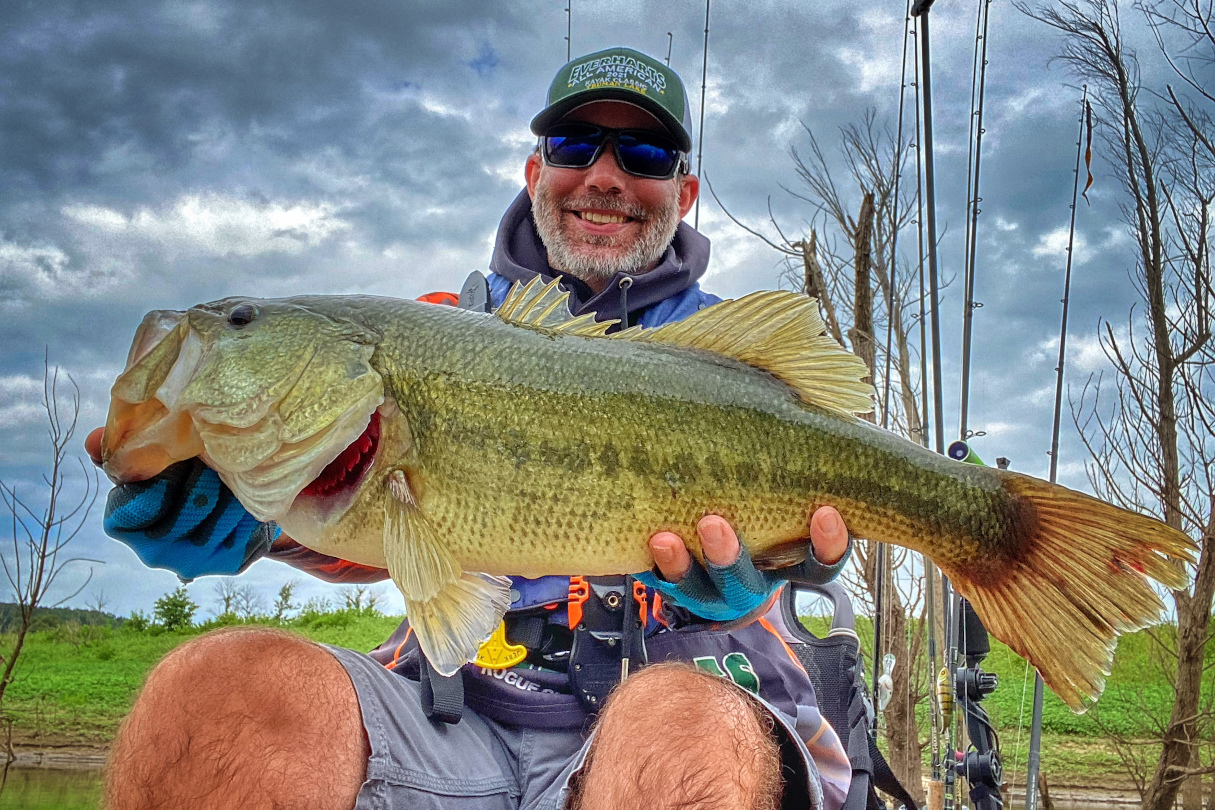
Chad Davison | Columbia, Missouri
- 8x Angler of the Year (AOY) titles
- $10,000 Biggest Bass in 2022 Big Bass 250
- 3x Bassmaster National Championship qualifier
- 51 kayak tournament wins since 2021
- $75,000 in kayak tournament winnings
Sponsors:
- Old Town Fishing
- Crock-O-Gator Bait Company
- Dungarees Workwear and Boots
- H2 Bait Design and Manufacturing, Everharts Outdoor Store
- Cashion Fishing Rods
- Max It Out LEDs
- Council Bluff Crankbaits
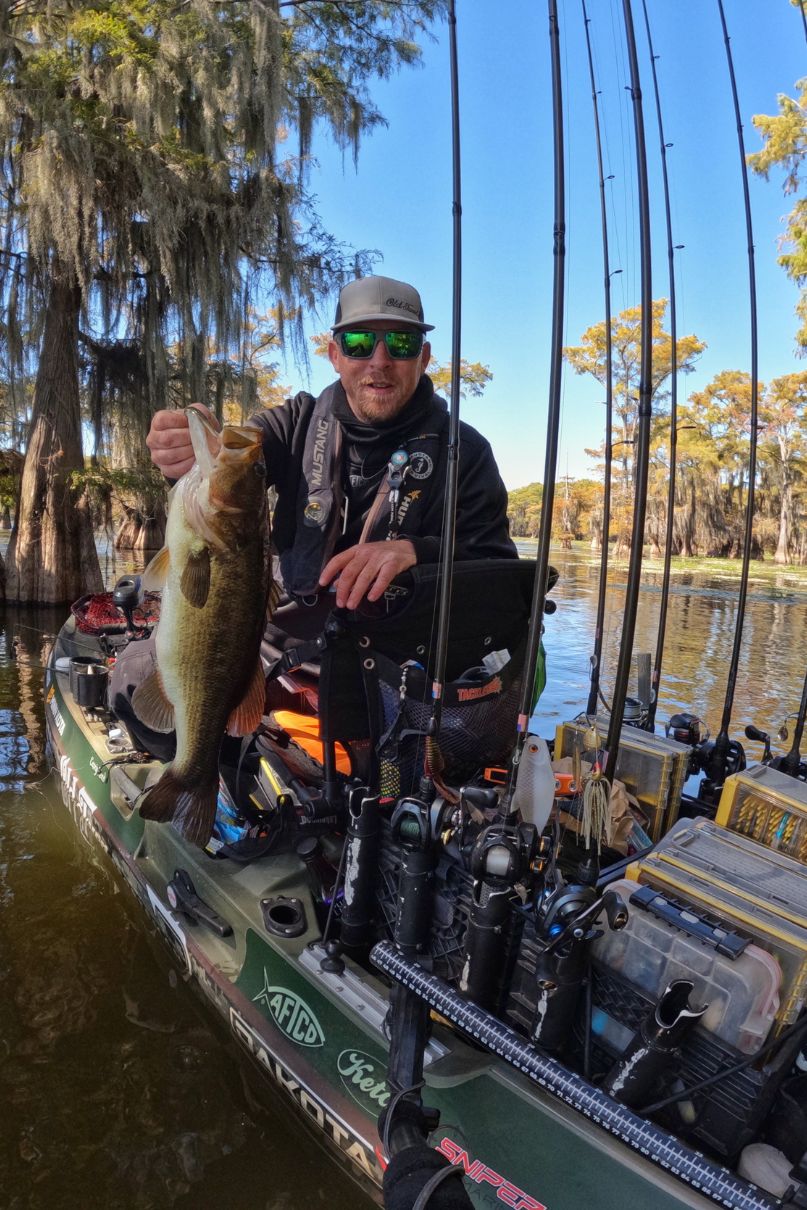
Casey Reed | Bedford County, Virginia
- 2x Kayak Bass Fishing Regional Champion
- 6x Bassmaster Kayak Series Championship Qualifier
Sponsors:
- Old Town
- Dakota Lithium
- Cashion Rods
- FishUSA
- Humminbird
- Minn Kota
- Yo-Zuri
- Ketch
- Aftco
- Leupold
- Sniper Marine
- Carver Covers

Jake Angulas
| Mont Vernon, New Hampshire
- 2021, 2024 Elite Kayak Fishing AOY
- 2X KBF The Ten Qualifier (2022 & 2023)
- 2x KBF 2023 Trail Series Champion
- Kayak Fishing League (KFL) AOY 2022
Sponsors:
- Nucanoe
- PowerPole
- Sniper Marine
- Dobyns Rods
Feature photo: Chad Davison

